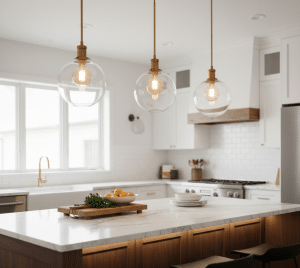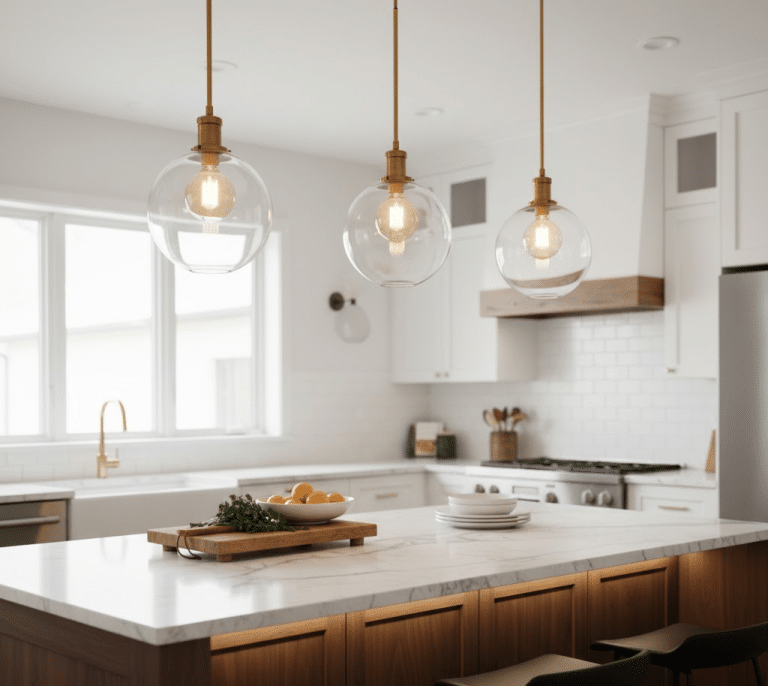Looking for a plant that adds beauty to your space without too much effort? The King Sago Palm is a perfect choice.
Although it looks like a palm, it’s actually a cycad and can grow well both indoors and outdoors.
However, it can be tricky to care for, especially because of its slow growth, need for the right conditions, and toxicity to pets.
In this guide, we’ll share easy-to-follow tips on caring for your Sago Palm, including how to plant, water, and deal with common problems.
If you’re a beginner or gardener, you’ll find useful advice to keep your Sago Palm healthy and beautiful.
Let’s get started!
What is the King Sago Palm?
The King Sago Palm, also known as Cycas revoluta, is a plant native to Japan and the Ryukyu Islands.
It grows best in warm, subtropical areas and is often used as an ornamental plant because of its unique look.
Although it is called a “palm,” the King Sago Palm is not actually a palm. It belongs to an ancient group of plants called cycads, which have been around for more than 200 million years, even before dinosaurs.
This plant grows very slowly, which makes it perfect for people who want a low-maintenance plant.
Its shiny, long leaves have spiny tips and grow in a circular pattern, creating a rosette shape. While the leaves are beautiful, they need proper care to avoid damage from too much sun or improper watering.
The name “Cycas” comes from the Greek word “koikas,” meaning palm tree, even though it’s not one.
The species name “revoluta” refers to the way the edges of the leaves curl backward, which gives them a unique look.
Even though it grows slowly, the King Sago Palm can eventually reach up to 10 feet tall. This makes it a great statement plant for your garden, patio, or indoors.
Its ancient history and unique features make it an interesting plant to grow and take care of.
How to Care for Your King Sago Palm

Caring for your King Sago Palm is easy as long as you follow a few simple rules.
- Watering Needs: Water the plant thoroughly when the soil feels dry. Be careful not to overwater, as the Sago Palm doesn’t like sitting in wet soil for too long. Make sure the pot has good drainage to prevent the roots from rotting.
- Sunlight Requirements: This plant loves bright, indirect sunlight. If you’re growing it indoors, try to place it near a window where it gets 4-6 hours of filtered sunlight each day. Avoid putting it in direct, harsh sunlight, as this can burn the leaves.
- Temperature and Humidity: The King Sago Palm grows best in warm climates. It can’t handle temperatures below 15°F, so if you live in a colder area, you’ll need to keep it inside. It can survive brief cold spells, but frost will damage the leaves.
- Soil Types and Fertilizer: It prefers sandy or loamy soil with a pH between acid and neutral. The soil should drain well to prevent water from sitting around the roots. In the spring and summer, you can use a mild fertilizer to give it a boost, but avoid overfeeding.
By following these simple care tips, your King Sago Palm will thrive and add beauty to your house.
Size and Growth of King Sago Palms
King Sago Palms can grow from 3 to 10 feet tall and wide, but indoor plants tend to stay smaller. This makes them perfect for both small spaces and larger gardens.
Slow Growth
One of the unique features of the King Sago Palm is its slow growth. It can take many years, even decades, for the trunk to grow from just 1 inch in diameter to 12 inches.
This slow growth makes it ideal for bonsai or for those who prefer slow-growing plants in their landscape.
Long-Term Care
As your Sago Palm matures, it will need more attention. Its trunk grows very slowly, so patience is required.
Here are some actionable tips to ensure long-term care:
- Prune Regularly: Remove dead fronds to keep the plant looking neat and healthy. Use sharp, clean pruning shears to avoid damaging the plant.
- Check for Pests: As it ages, your Sago Palm might attract pests like mealybugs or scale insects. Inspect it regularly, especially around the trunk and leaves, and treat it with insecticidal soap if necessary.
- Ensure Proper Drainage: As the trunk grows, the root system may expand. Make sure the pot or garden bed has excellent drainage to prevent water from accumulating at the base.
- Repot if Needed: If your Sago Palm grows too large for its current container, repot it into a slightly larger one. Be sure to use well-draining soil.
With these steps, your King Sago Palm will remain healthy and continue to grow for many years.
Propagation of the King Sago Palm

If you want more Sago Palms, you can propagate them in two ways: through seeds or suckers.
1. Seed Propagation
Sago Palms produce cones with exposed seeds, and pollination occurs between male and female plants.
If you have both male and female plants, pollination happens naturally, and the seeds mature between September and October.
Once the seeds are ready, you can plant them to grow new Sago Palms. This method requires patience, as the seeds may take several months to sprout.
2. Sucker Propagation
Sago Palms also produce suckers, or small offshoots, at the base of the plant. These suckers can be carefully removed and planted in new pots or garden spaces.
Suckers are an easier and faster way to grow new plants compared to seeds, as they are already partially developed.
Cut the sucker from the main plant, making sure it has some roots, and plant it in well-draining soil.
Both methods allow you to expand your collection, but sucker propagation is much quicker and simpler.
Pet Safety and Toxicity Considerations
King Sago Palms are beautiful, but they come with a serious warning for pet owners. All parts of the Sago Palm contain a toxin called cycasin, which can be harmful if ingested.
The seeds are the most toxic part of the plant. Ingesting any part of the Sago Palm can cause serious symptoms in both humans and animals, including vomiting, diarrhea, and even liver failure.
Sago Palms are especially dangerous to pets like dogs and cats. If a pet eats any part of the plant, it may show symptoms such as nosebleeds, bruising, and blood in the stool.
If you suspect your pet has eaten a Sago Palm, contact a vet immediately.
Precautions
To keep your pets safe, place the Sago Palm out of their reach. If you have curious animals, consider using barriers or putting the plant in areas where pets cannot access it.
Being proactive in protecting your pets can prevent serious health issues.
By taking these precautions, you can safely enjoy your King Sago Palm while protecting your pets.
Common Problems with King Sago Palms
While King Sago Palms are relatively easy to care for, they can still face a few common problems. Here’s what to watch out for.
Pests and Diseases
Sago Palms are usually low-maintenance, but pests like Cycad Scale, mealybugs, and spider mites can sometimes become a problem.
These pests can damage the plant by sucking the sap from the leaves, causing them to weaken over time.
Troubleshooting
Common issues like yellowing fronds or pests can be managed with a few simple solutions:
- If the leaves start to yellow, it might be due to overwatering or poor drainage. Adjust your watering schedule and make sure the plant has well-draining soil.
- For pests, try wiping the leaves down with a damp cloth to remove small bugs. You can also use insecticidal soap to treat more serious infestations.
Preventative Care
To avoid most problems, ensure your Sago Palm is in ideal growing conditions. Provide the right amount of water, ensure it gets enough filtered sunlight, and check the drainage of the soil regularly.
Proper care helps keep your plant healthy and prevents many of these issues from arising. By addressing these common problems, your King Sago Palm will continue to flourish and look beautiful.
Indoor vs. Outdoor Growth of King Sago Palm

King Sago Palms can thrive both indoors and outdoors, but they have different needs depending on where they are planted.
Indoor Conditions
Sago Palms do well in homes with sufficient indirect sunlight. They can be grown indoors, but they need space to spread out.
Place them in an area where they’ll get 4-6 hours of filtered sunlight each day. Indoor plants tend to be smaller than those grown outdoors, but they still need enough room to grow properly.
Outdoor Conditions
These palms are best suited for subtropical or tropical climates. Outdoors, they make beautiful accent plants, especially in rock gardens or as border plants.
They enjoy bright, indirect sunlight and can be planted in areas that mimic their native environment, such as along hillsides.
Cold Tolerance
King Sago Palms are not frost-resistant and cannot survive freezing temperatures. They are best suited for USDA zones 9-12.
If you live in a colder area, you can grow your Sago Palm in a container and bring it inside during the winter to protect it from the cold.
With the right care and conditions, the King Sago Palm can add a touch of sophistication to your space, whether indoors or outdoors.
Benefits of the King Sago Palm
- Aesthetic: The King Sago Palm’s glossy, feather-like fronds give it a unique, ornamental look. It adds a touch of elegance to any space, whether indoors or in the garden.
- Air-Purifying: Like many houseplants, the Sago Palm helps purify the air by removing harmful toxins, improving the overall air quality in your home.
- Low-Maintenance: With its slow growth and minimal care needs, the King Sago Palm is perfect for gardeners who want a long-lasting plant that doesn’t require constant attention.
- Durable: Known for its long lifespan, the Sago Palm can last for many years, making it a great investment for your home or garden.
- Versatile: This plant can thrive both indoors and outdoors, making it a flexible choice for various spaces and climates.
- Non-toxic: While it is toxic to pets, the Sago Palm is generally safe for humans, adding beauty without worry.
Where to Buy and How Much it Costs
King Sago Palms are cherished for their distinctive beauty and slow growth.In the United States, prices vary based on size, age, and location.
Here’s a general overview:
Small Plants: Typically range from $20 to $50 depending on the size and location.
Medium-Sized Plants: Generally cost between $75 to $150.
Large Specimens: Depending on the plant’s size and maturity, they can range from $150 to $250 or more.
These prices can vary depending on factors such as the nursery, location, and specific size of the plant. For the most accurate pricing, it’s best to check with local garden centers or online retailers.
Tips for First-Time Growers
Follow these steps to ensure your King Sago Palm grows healthy and strong.
- Spot: Place your Sago Palm in a spot with indirect sunlight. Indoors, aim for 4-6 hours of filtered light near a window. Outdoors, choose a bright, frost-free area.
- Watering: Water when the top inch of soil feels dry. Make sure the pot has good drainage to avoid waterlogging the roots.
- Fertilizing: Apply a balanced fertilizer during the growing season (spring and summer). Avoid fertilizing in fall and winter when the plant is resting.
- Pruning: Regularly trim away dead fronds to keep the plant tidy and encourage healthy growth.
Common Problems to Look for
- Yellowing Fronds: If fronds turn yellow, check for overwatering or inadequate sunlight.
- Pests: To treat pests like scale or mealybugs, wipe the leaves with a damp cloth or use insecticidal soap.
- Slow Growth: Be patient; Sago Palms grow slowly, so don’t expect fast results.
By following these steps, your Sago Palm will thrive with minimal effort.
Conclusion
The King Sago Palm is a beautiful plant that can beautify any room or garden.
With just a little attention, like providing the right light, watering properly, and trimming dead leaves, you can enjoy this unique plant for many years.
Its slow growth and low maintenance make it a great choice for beginners and experienced gardeners alike.
If you’re looking for a durable, eye-catching plant, the Sago Palm is a perfect addition.
Interested in learning more? Visit our website for similar content and helpful plant care tips!













